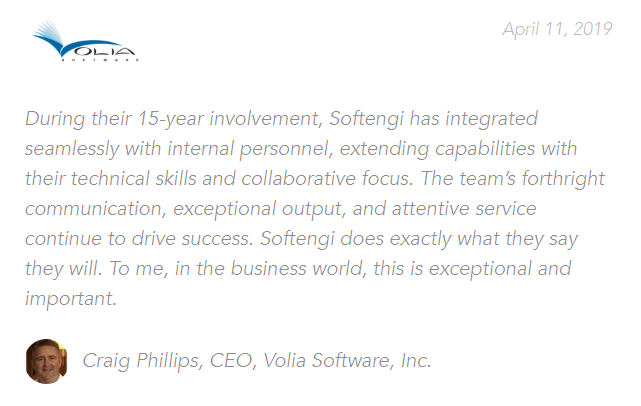Volia Software addressed Softengi with a request to create a Virtual Training Assistant for one of its customers – RISC, Inc. The company had an already developed system called Virtual Training Assistant (VTA) – a comprehensive application automating the process of personnel training for large corporate customers in the United States.
Softengi’s main task was to port the system initially developed with Microsoft Visual FoxPro to the Microsoft .NET platform, considering the predetermined extensibility requirements. Besides, it was necessary to extend the system with the new functionality at the succeeding stages of its development.
Challenges
The ultimate goal of porting the system to the .NET platform was to employ new facilities provided by this technology, create thin web clients as application front-ends, extend security mechanisms, provide multilingual UI, increase performance, etc.
Another challenge was to provide better supportability since Microsoft announced that it would stop supporting VFP 9 soon. Besides, a special synchronization strategy was needed to ensure a subtle migration process for the current users of the running system.
Softengi Team Tech Contribution
The Softengi team has split the porting process into several stages, focusing on certain subsystems in the application suite. We used the agile development methodology, as well as essential practices like model-driven engineering, prototyping, and test-driven development. In the course of system extension development, Softengi provided support and kept close communication and collaboration with the customer with regard to both on-site and off-site activities.

Main Contributions Made by the Softengi Team
- Changes were made to certain elements like security, multilingual, license management, and others;
- New system architecture meeting such specific requirements as the possibility to work in a distributed environment, integration with legacy system, etc;
- Functional changes and changes in interaction scenarios to achieve a balance between the expectations of users used to working with VFP-based systems and new possibilities provided by modern technology;
- Scalable solution targeted to various categories of users from small companies to large corporations working under two pricing models – ASP and Licensed Software.
PEOPLE ALSO READ

AI-Powered Permit Analyzer for Regulatory Compliance
Softengi developed an AI application that streamlines the review of complex permit documents.

Universal Data Lake Publishing Service for Large-Scale Data Publishing
Softengi successfully implemented a data lake publishing solution that addresses EHS vendor's critical data transfer challenges.

Mental Well-Being Clinic for Virryhealth
Softengi developed a virtual clinic with interactive and non-interactive activities where visitors could schedule therapy sessions with medical experts and visit a VR chat in the metaverse to interact with the amazing nature and animals of the African savanna.

